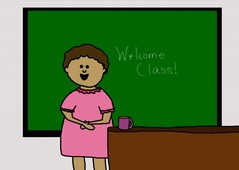
Stuttering is a fluency disorder that is defined as a disruption in the forward flow of speech. It is commonly characterized by repetitions (ex. ba-ba-baseball), sound prolongations (ex. mmmommy), or blocks (i.e. no sound). Disfluencies may also be accompanied by negative thoughts and feelings about stuttering, avoidance of sounds, words or situations and physical tension or struggle behaviors (ex. eye blinking, lip tension, head nodding, etc.). Stuttering is NOT an emotional disorder, but stuttering can certainly have an emotional impact. As children get older, they may develop “tricks” for hiding their stuttering by swapping out words or planning and rehearsing what they are going to say before speaking. Other children may avoid speaking in certain situations altogether. These “tricks” may make it look like the child is stuttering less or has eliminated stuttering altogether, however this fluency comes at a significant cost to their emotional and social wellbeing as well as their ability to thrive in an educational setting. There are many young children who demonstrate disfluencies in their speech as they go through the natural process of developing language, however these disfluencies look and sound different than stuttering. Consult a speech/language pathologist if you are unsure if what you’re seeing is “true stuttering.” If a differential diagnosis is made early on, the family can make use of the critical window of time that therapy is most effective.
HOW CAN TEACHERS HELP?
- Saying things like “slow down”, “think about what you want to say” or “take a deep breath” may help fluent speakers when they are stumbling on their words. However, children who stutter are disfluent for different reasons and these remarks often add more pressure and thus trigger more disfluencies. Instead slow your own rate of speech by adding pauses within your sentences at natural breaks, between your sentences and after the student finishes their thought to reduce pressure.
- Keep eye contact when your student is speaking to convey that you are listening and allow them to complete their thought rather than filling in words or sentences.
- Help everyone in your classroom take turns talking to reduce interruptions. Some children who stutter find it easier to get started when they speak over another person, however it is important that children who stutter learn the same rules for communication as anyone else.
- It is okay to talk about stuttering! However, keep in mind that every child has a different level of comfort surrounding this topic. Speak privately to the child to learn how they would like you to support them. Discuss topics such as a) if and how they would like you adjust when they are having a particularly difficult speaking day b) which situations are easier/harder for them and c) how they would like you to handle questions/teasing from peers.
- Consult with the speech/language pathologist before asking the child to use any strategies within the classroom. Making changes to the way one communicates takes considerable time and practice and must begin in low pressure situations. The child may not be ready to make these changes in the classroom setting.